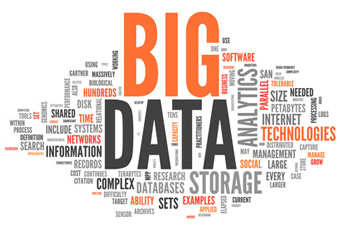By Daniel King
Co-founder of EnergyNow
The concept of Big Data is defined as a growing volume, variety and velocity of data which is quite familiar to the energy industry. Oil and gas organizations have dealt with huge amounts of data for decades in their quest to learn what lies below the surface. Big Data makes it possible to gather and transmit information more effectively.
Companies with better Big Data capabilities are twice as likely to be on top of financial performance. Furthermore, it is five times more likely to make faster decisions than their peers. Oil and gas companies could leverage Big Data technologies to collect, manage and rapidly analyze seismic drilling and production data. They could also acquire new insights that help improve drilling and production performance.
Now is the time to develop a plan that maps the ambitions of a company against its capabilities. Big Data describes the path towards a world-class and advanced capability.
The advent of the digital oil field helps in the production of cost-effective energy while at the same time addressing environmental and safety concerns. The term Big Data historically has been considered by the industry as a term used by ‘softer’ organizations to track the behaviors of people, sentiments, buying styles and more. Nonetheless the Big Data concept, defined as increasing variety, volume and velocity of data is a bit familiar to the industry.
The decisions and processes that relate to exploration of oil and natural gas, developing and producing acquire big data amounts. The data volume grows on a daily basis. With the acquisition of new data, storage and processing solutions and developing new devices for tracking a wider array of machinery, reservoir and personnel performance, total data nowadays is predicted to double in the next couple of years. The oil industry acknowledges that imminent breakthroughs and power could be found in data by using it in faster, smarter ways.
Big Data analytics could be new to some industries, however, oil and gas companies have dealt with large amounts of data for decades in their search to learn what lies below the surface. Data visualization, seismic software and now a new generation of pervasive computing devices, sensors that gather and transmit data, continue in opening new possibilities. With the advanced analytic capabilities and new tools, producers of oil and gas could capture more detailed real-time data at lower costs, which could help them boost oilfield and plant performance by six to eight percent.
Surveys revealed that companies with better Big Data and Analytics capabilities were twice as likely to be on top of financial performance in the field, five times more likely to make decisions quicker than their peers and three times likely to execute decisions as planned. The same as other industries, a lot of energy companies have complex, legacy Information Technology systems which have evolved over decades and now contain various islands of disparate data sets. Adding big volumes of unstructured, real-time data exacerbates the issue, but this is where valuable insights arise.
Oil and gas organizations would have to improve their analytics capabilities to compete in an industry where decisions move faster and the stakes grow even higher. Building a world-class analytics capability will take time and investment, and it could only happen with a sustained concentration by top management. Today is the time to develop a plan that maps a company’s ambitions against its capabilities, and describes the path into an advanced, world-class analytics capability.
These dramatic changes in the oil and gas industry, combined with advances in how petroleum companies gather and use data for a huge range of exploring and producing oil, making it an exciting time for those in the field of oil and gas exploration. Considered as one of the original sensor-based fields, the petroleum environment has long gathered sensor data from thousands of thousands of sub-surface oil wells to keep track of oil assets.
Nowadays, oil and gas companies can leverage Big Data technologies like, for example, the MapR Converged Data Platform for collecting, managing and rapidly analyzing seismic drilling and production data. Oil and gas organizations can also leverage data to acquire new insights that help boost drilling and production performance while preventing safety and environmental concerns. Additionally, MapR could help petroleum businesses capitalized on Big Data to optimize their operations, lower costs and boost their competitive edge.
Recently we visited Paul Ritchie from Osprey Informatics. They have successfully developed a remote asset monitoring system in Canada. The company’s intelligent visual monitoring platform, Osprey Reach, manages visual sensors and data at an enterprise scale, analyzes this data with computer vision and applies artificial intelligence to proactively deliver concise, accurate and actionable information to stakeholders across the company. Now that’s using Big Data to drive down remote visit costs and drive up real time information to make better decisions.
Share This:





 CDN NEWS |
CDN NEWS |  US NEWS
US NEWS 


































COMMENTARY: Activists Suddenly Care About LNG Investors